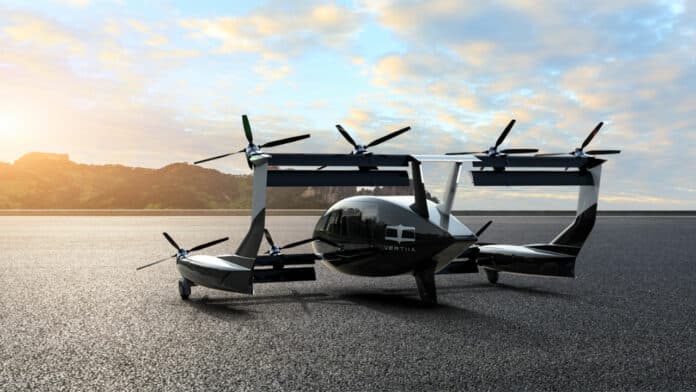Australian aerospace startup AMSL Aero (AMSL) has received $5.43 million from the Australian Renewable Energy Agency (ARENA) to develop a hydrogen-powered electric Vertical Take-Off and Landing aircraft (eVTOL) that could revolutionize regional air transport in Australia.
The funding is part of the Advancing Renewables Program, which aims to support innovative renewable energy projects.
Based at Sydney’s Bankstown Airport, AMSL Aero was founded in 2017 by husband and wife team Andrew Moore and Siobhan Lyndon to develop and manufacture zero-emissions aircraft. The company has already successfully developed a prototype battery-electric version of the “Vertiia” aircraft that can fly up to 250 km (155 miles) at 300 km/h (186 mph).
They are now working on a hydrogen fuel cell version of the aircraft, which could extend its range and make it more versatile.
The Vertiia is designed to be a zero-emission, low-noise, and high-speed aircraft that can operate in urban and regional areas. Similar in operation to a helicopter and fitted with eight rotors, the Vertiia will be capable of carrying up to five passengers over distances up to 1,000 km (621 miles).
The $5.43 million grant will support AMSL to undertake development and certification activities for the aircraft, culminating in a successful demonstration with a test flight of the prototype. If everything goes according to plan, the company says the Vertiia aircraft will become one of the cleanest and most affordable forms of air transport for ranges up to 1,000km.
AMSL has designed the aircraft with the intention of making it available for markets such as air ambulance, emergency services, and passenger and cargo transport. Its unique configuration offers new and innovative ways for emergency services to deal with specialized situations, including fighting bushfires.
In addition to extended range, the move into using hydrogen as a fuel will allow Vertiia aircraft to refuel much faster, making it more practical and economical.
The aviation sector is responsible for around 2.5% of global greenhouse gas emissions. It is worth noting that nearly one-fifth of these emissions come from short-haul flights under 1,000km. Therefore, the success of Vertiia could prove to be a significant step towards reducing the aviation sector’s carbon footprint.
“Developing low emissions air transport will require a variety of solutions, including hydrogen and battery electric. AMSL’s work on the Vertiia is truly pioneering in this space,” ARENA CEO Darren Miller said in the press release. “For end users like emergency services and personal and cargo transport, this technology is an exciting prospect for cutting emissions and costs from air transport.”
The development of Vertiia has received additional support from the Australian Government via the Emerging Aviation Technology Partnerships program. The company is aiming for a demonstration in 2025 and potentially commercial availability in 2026.
